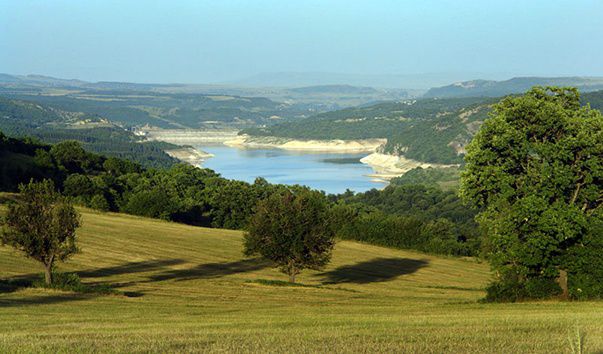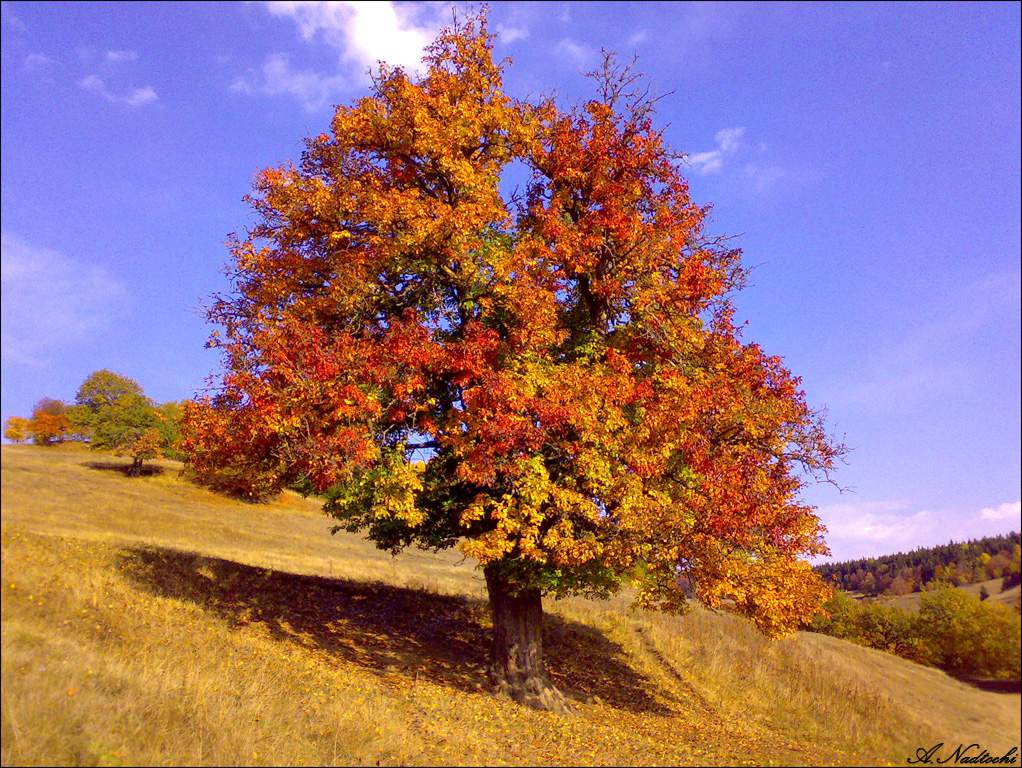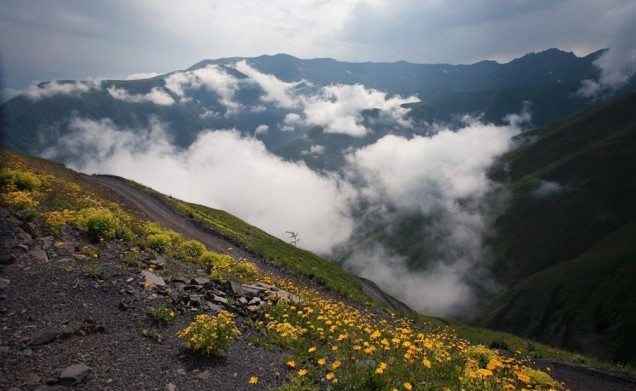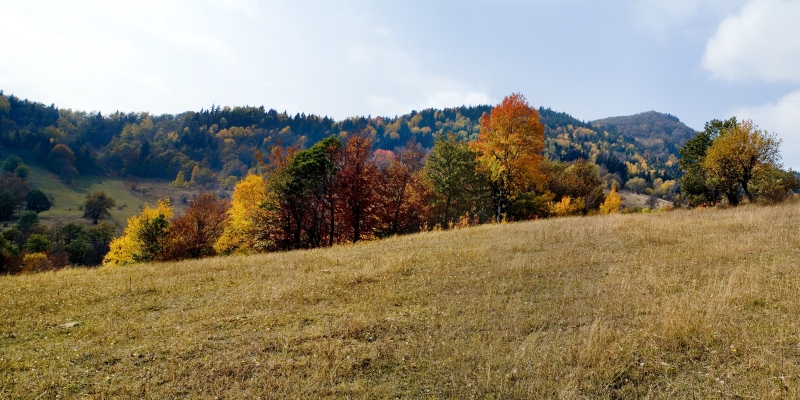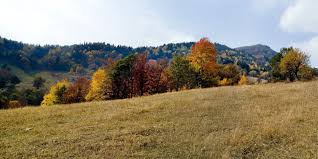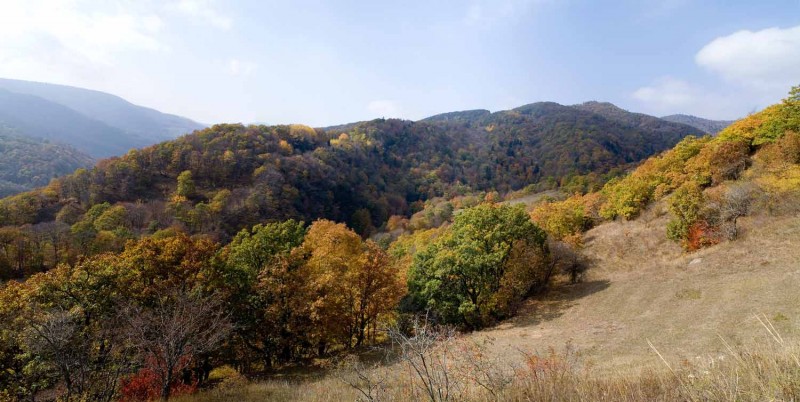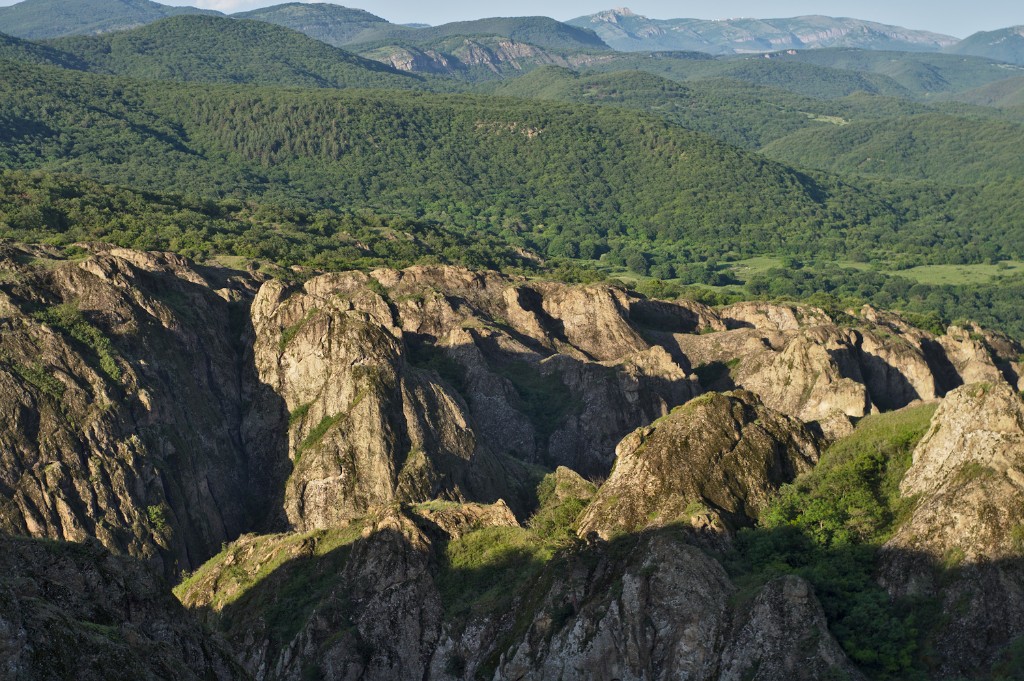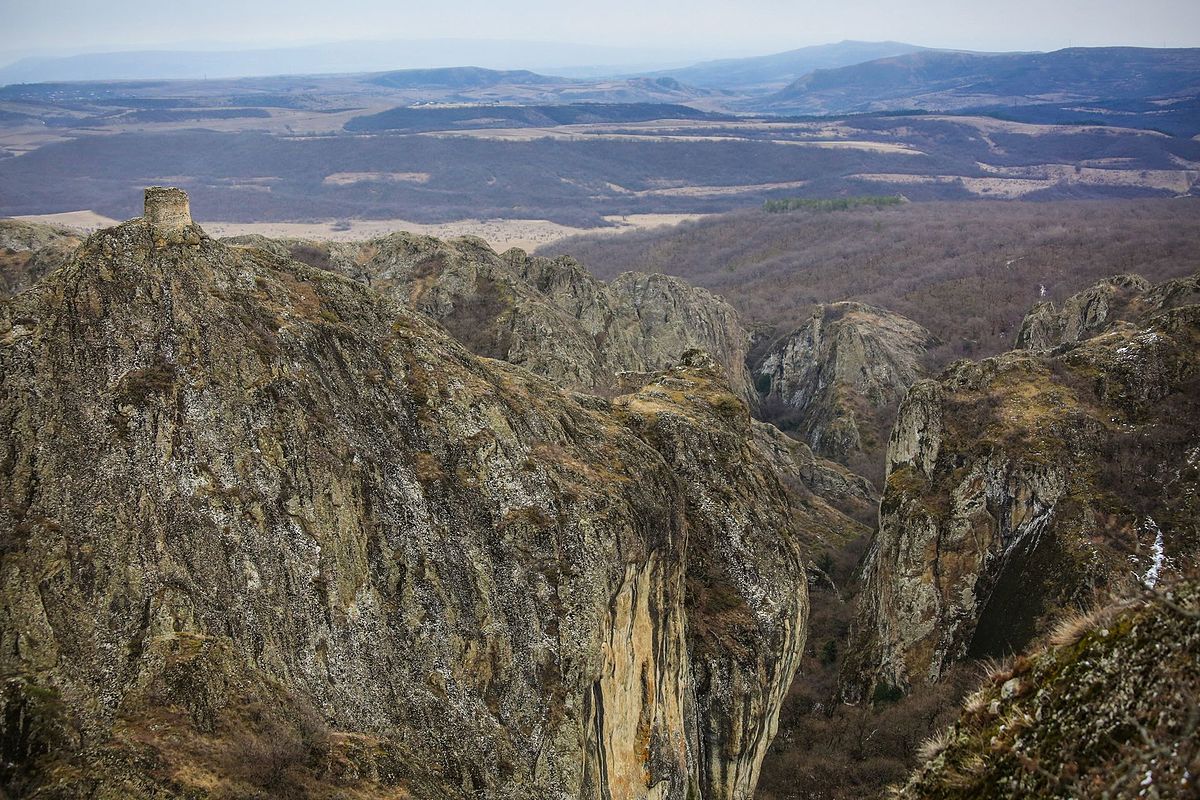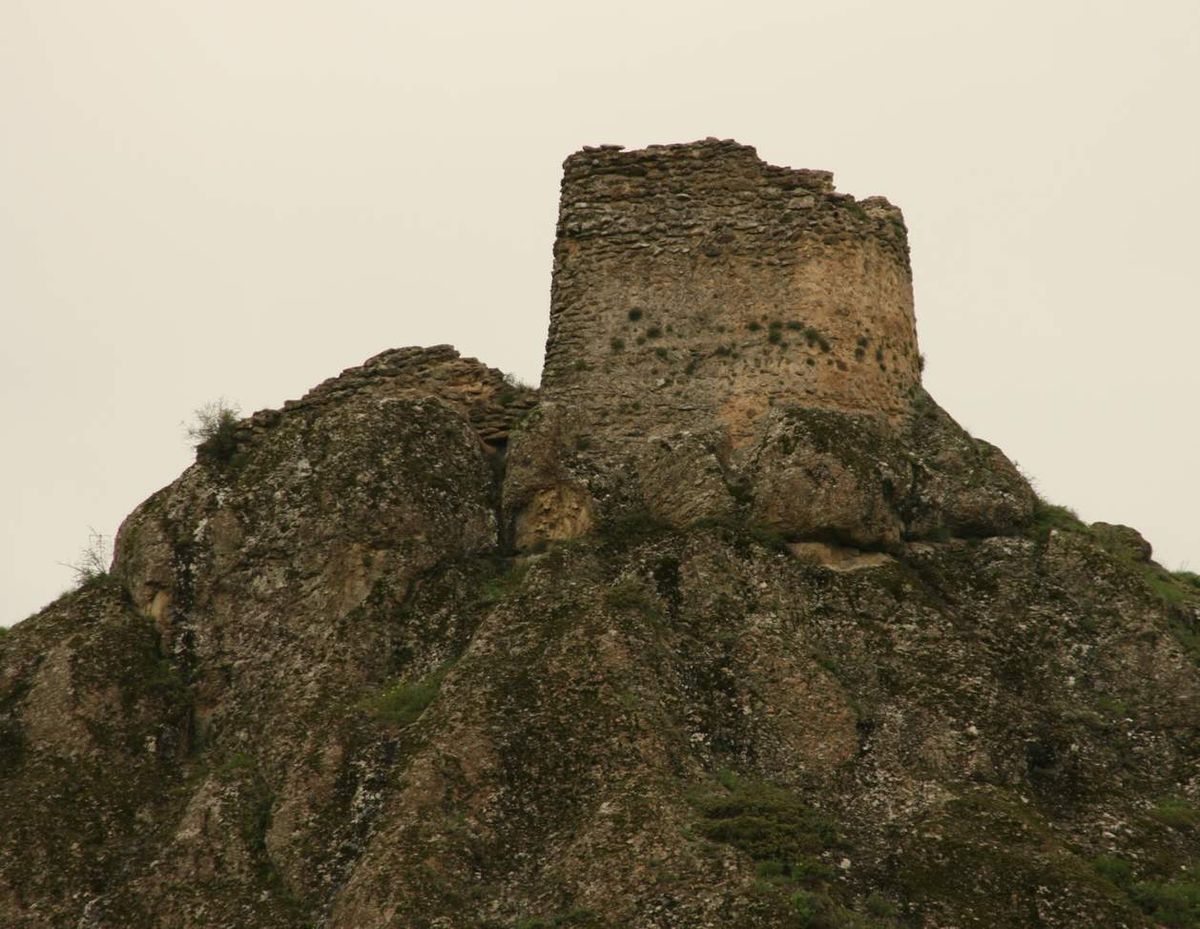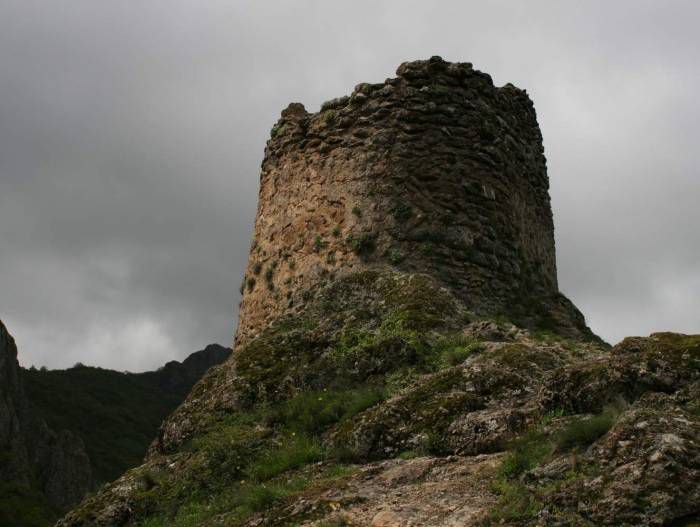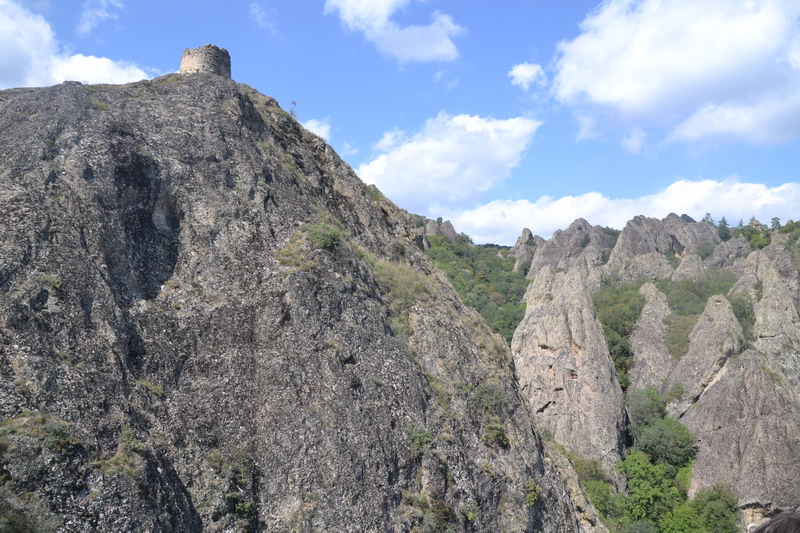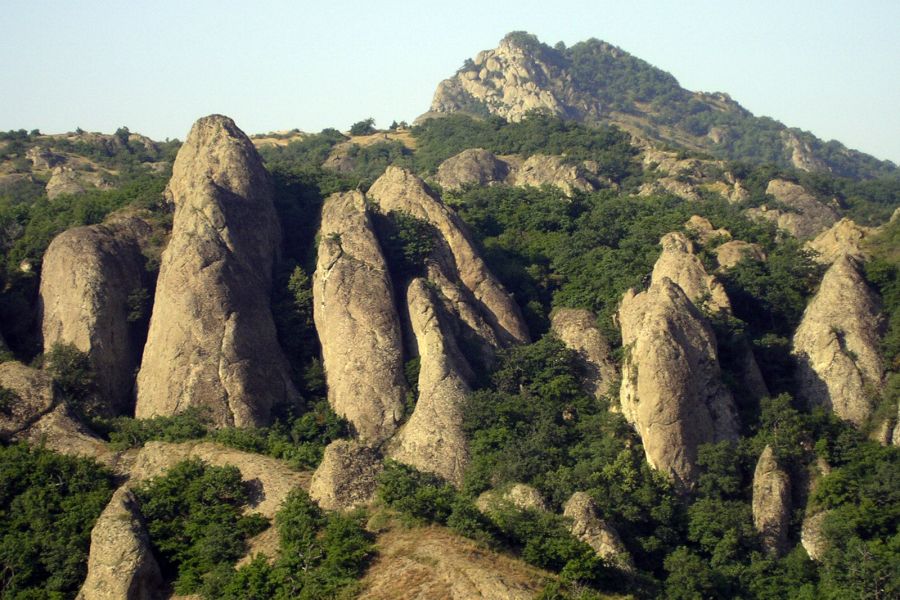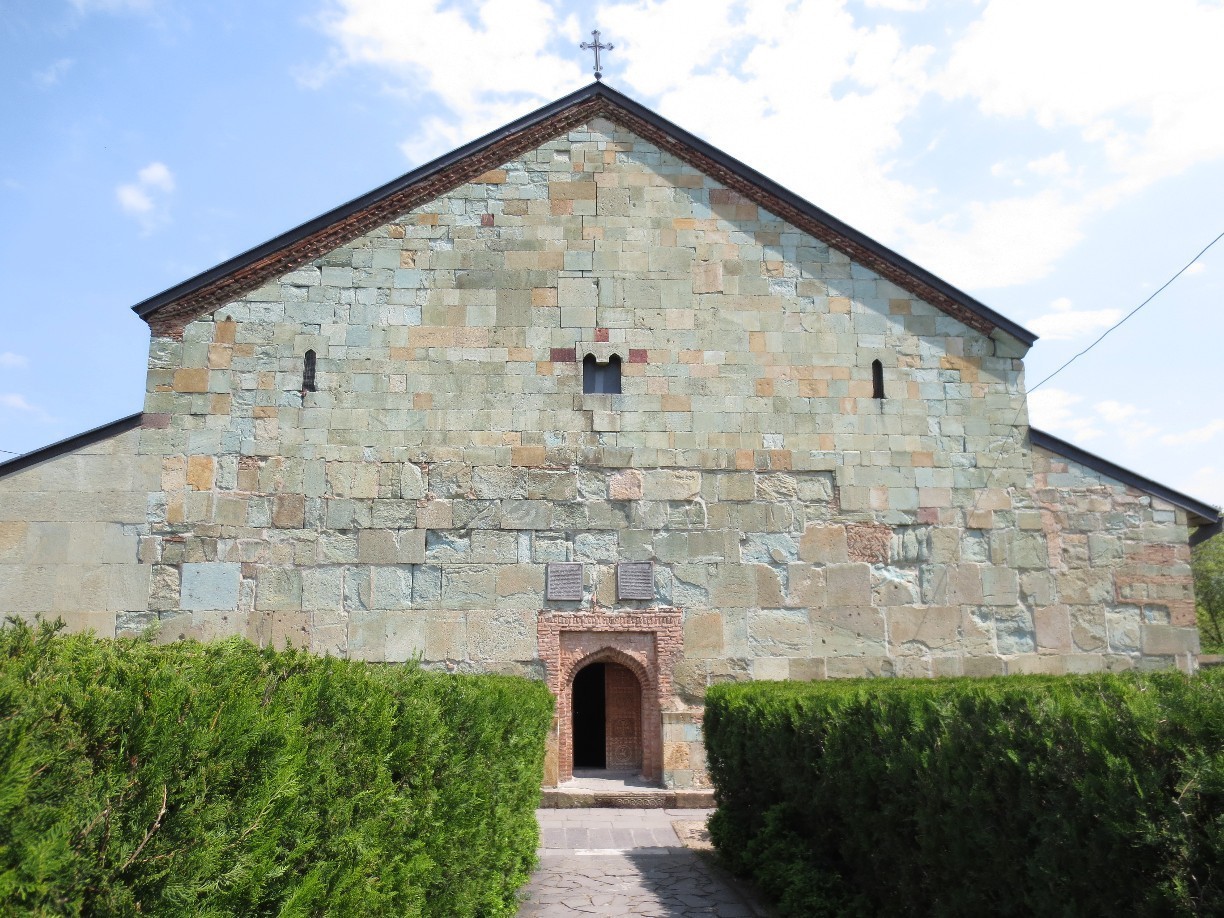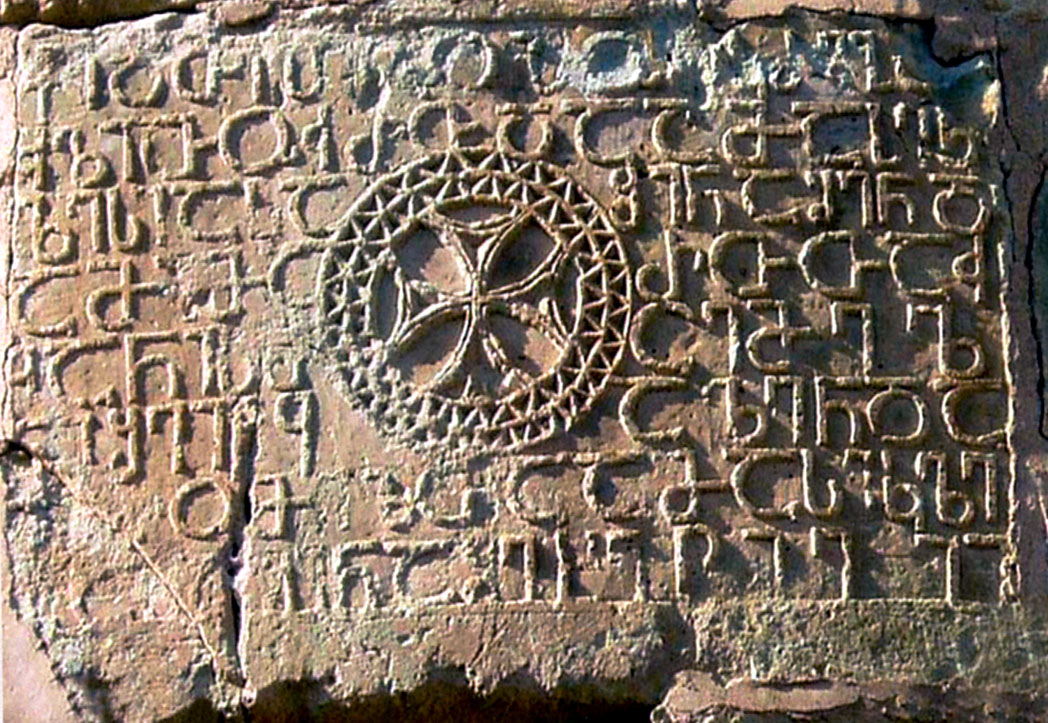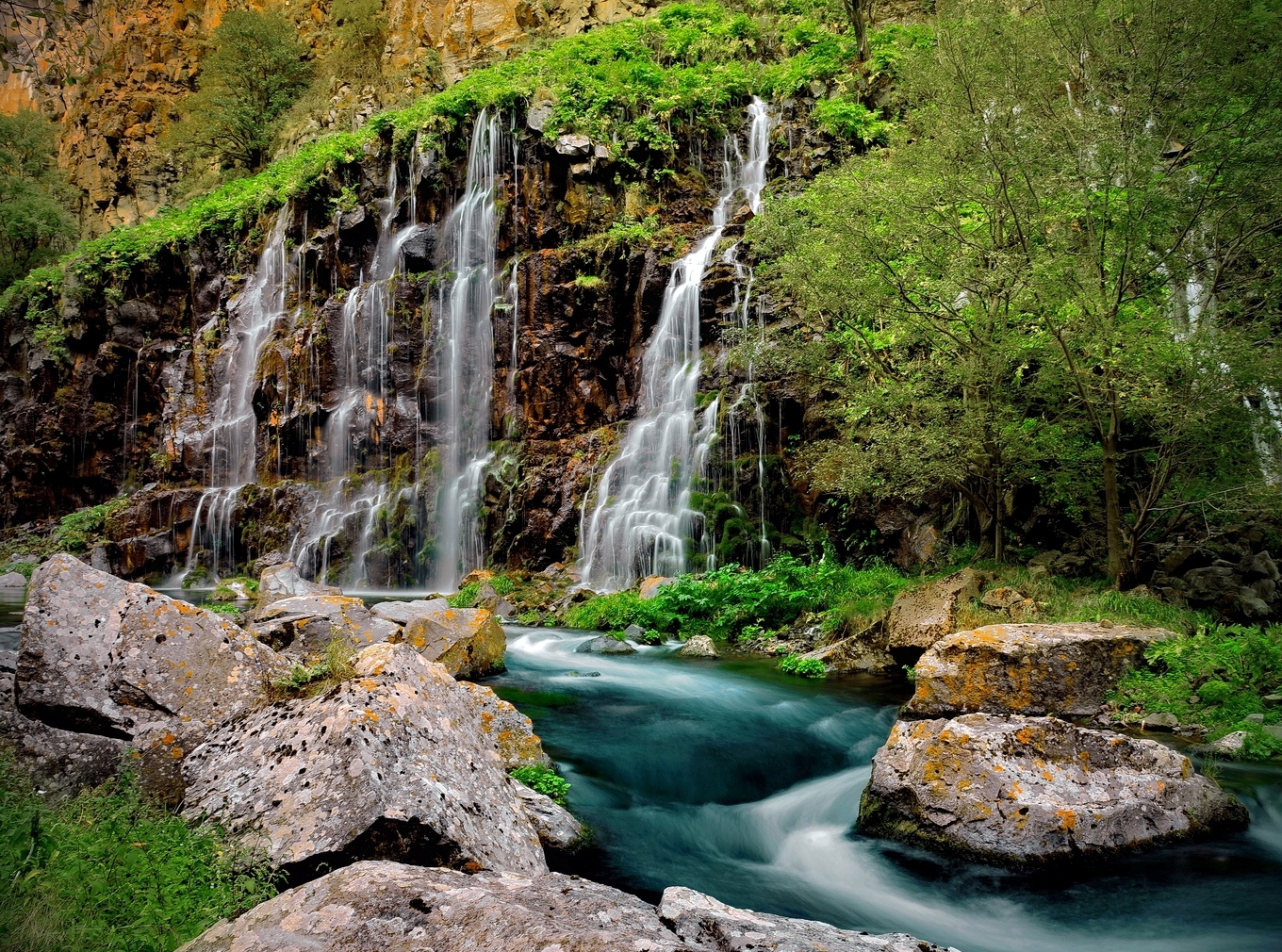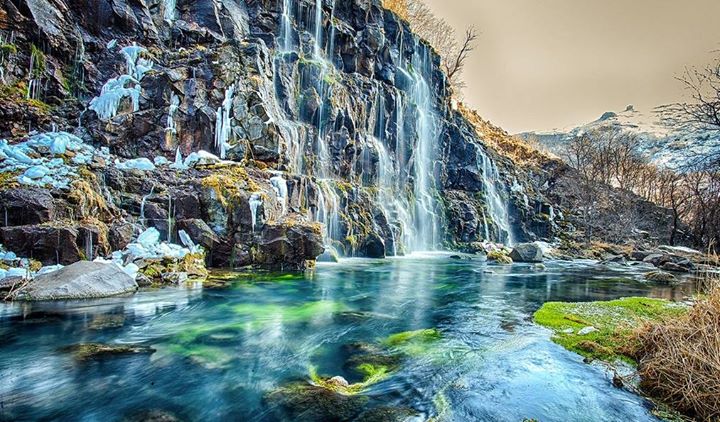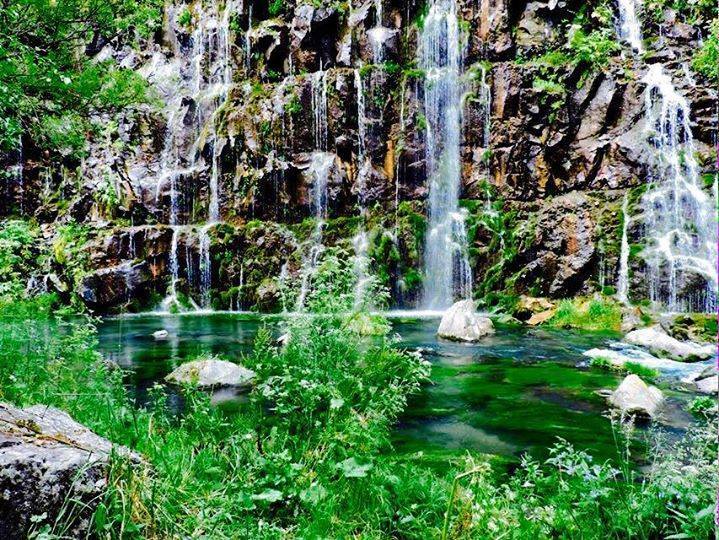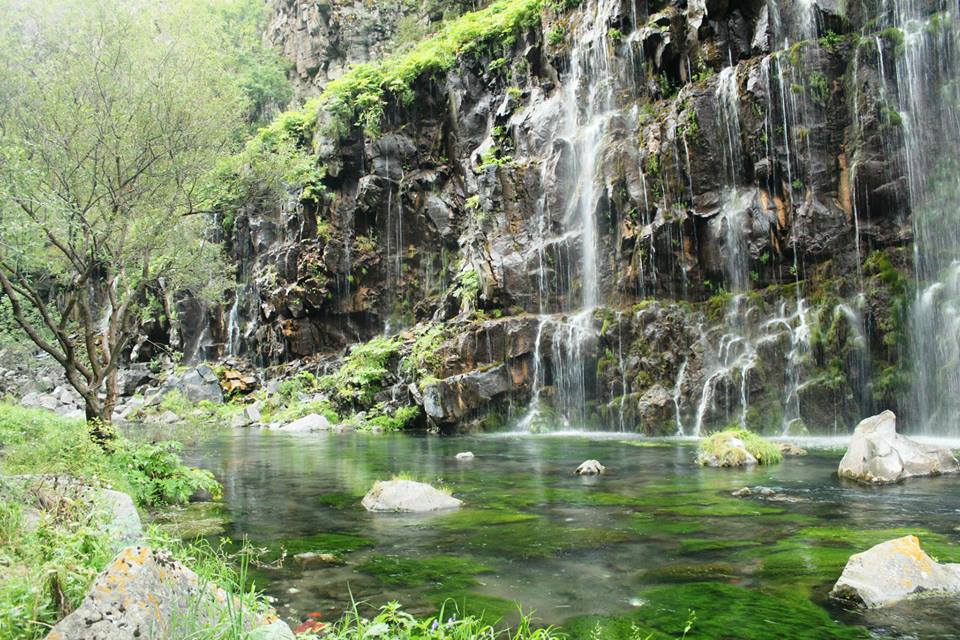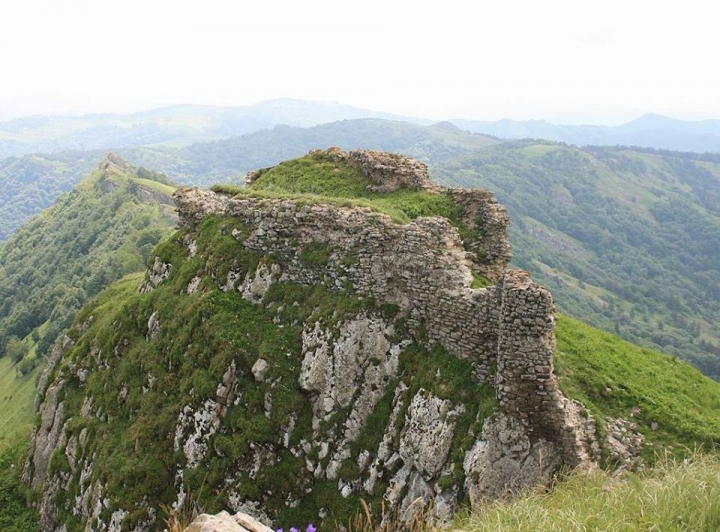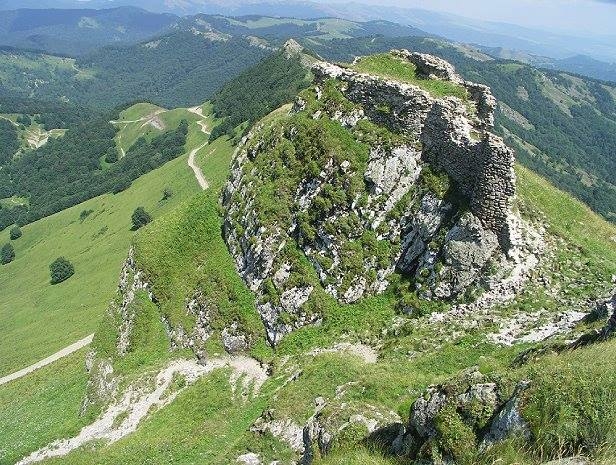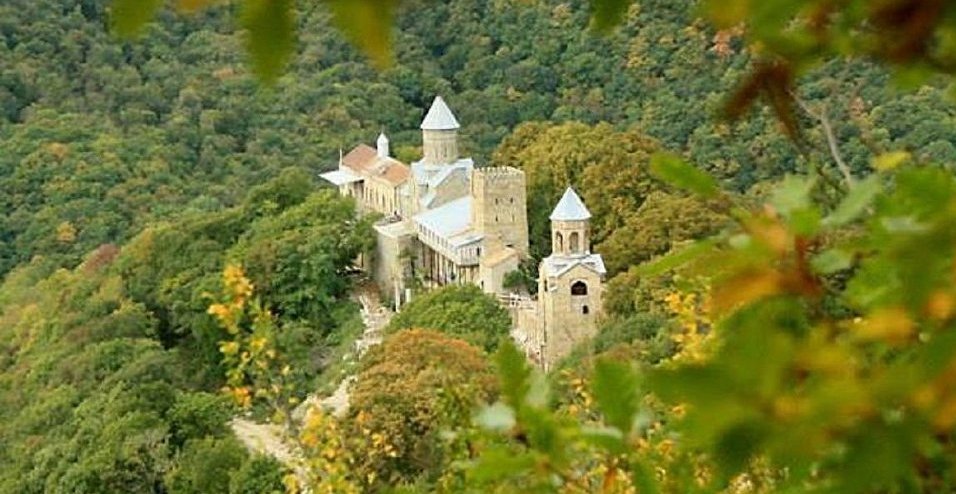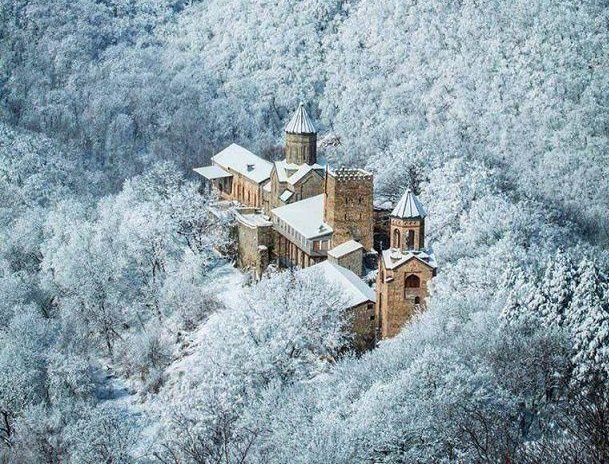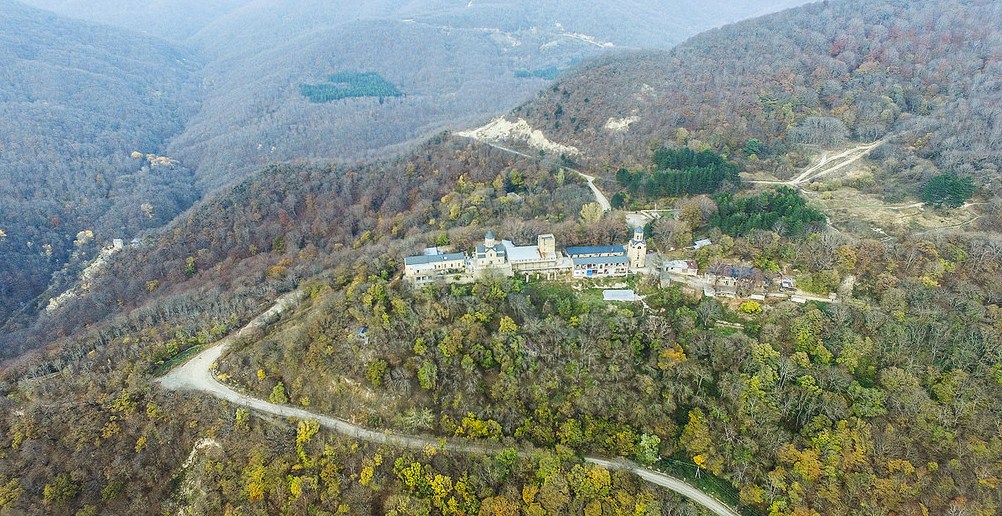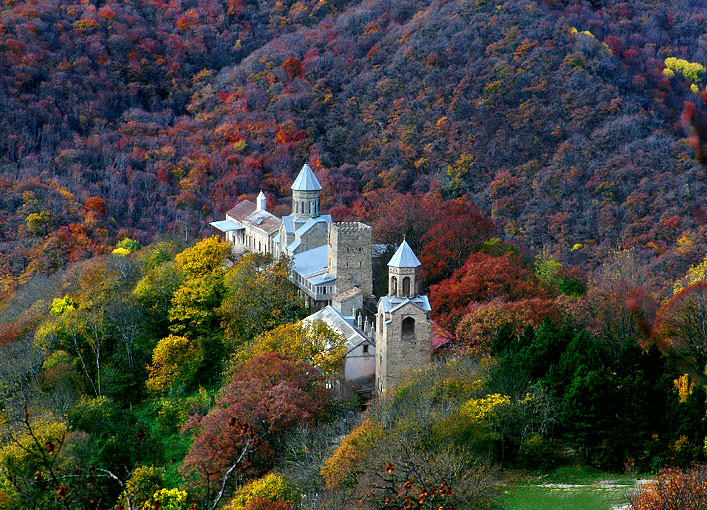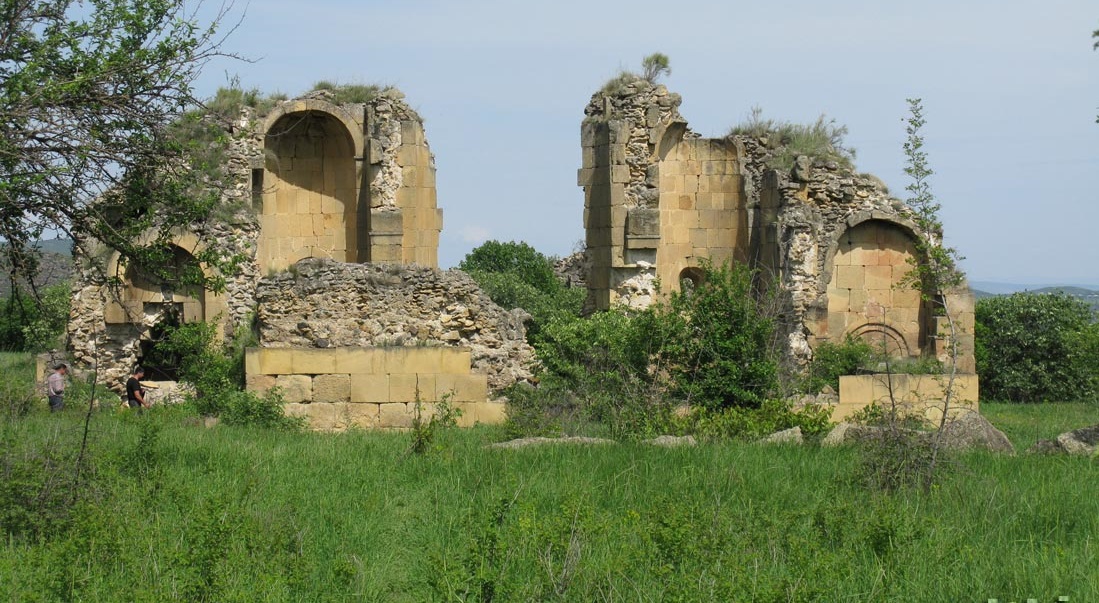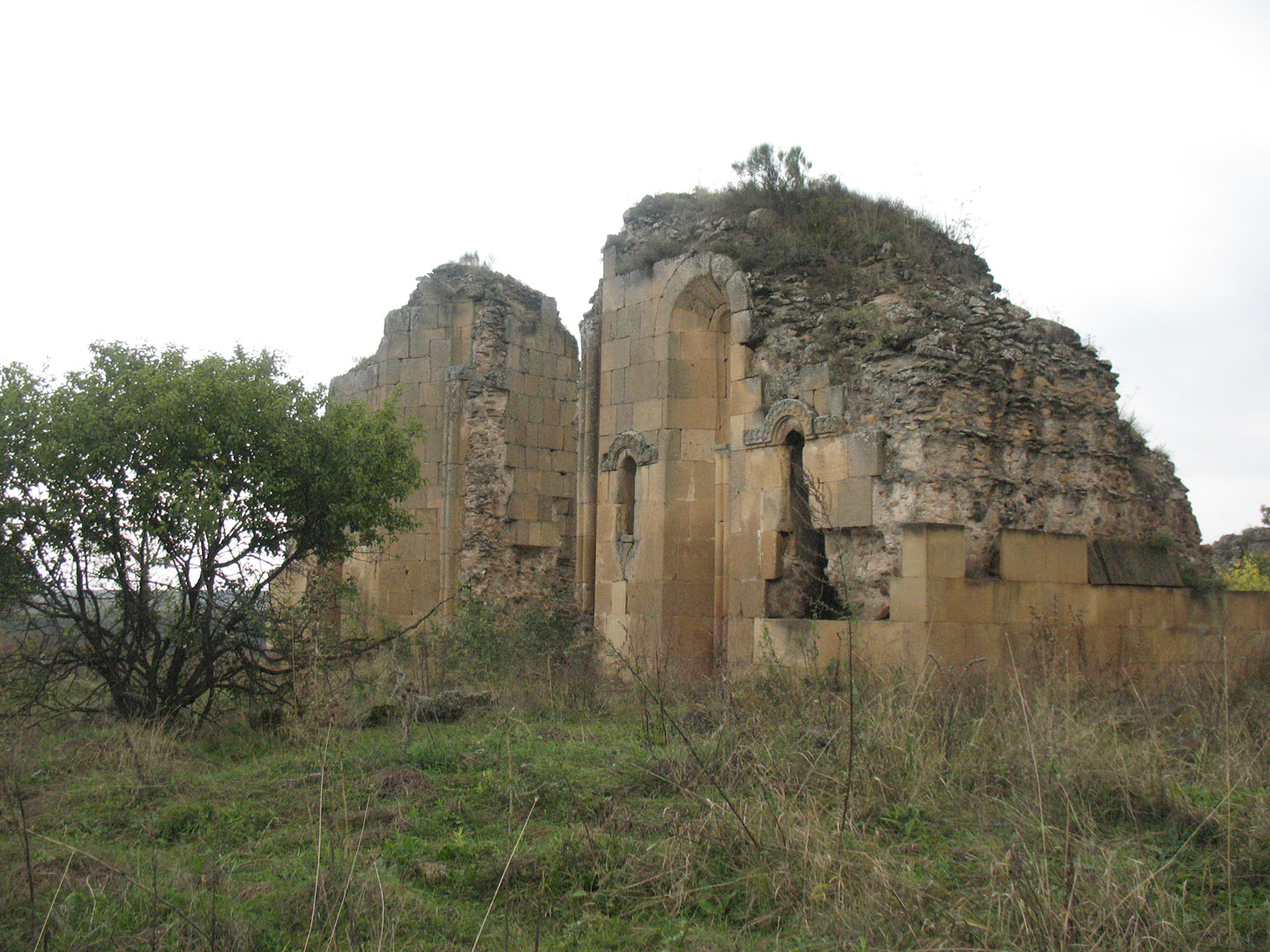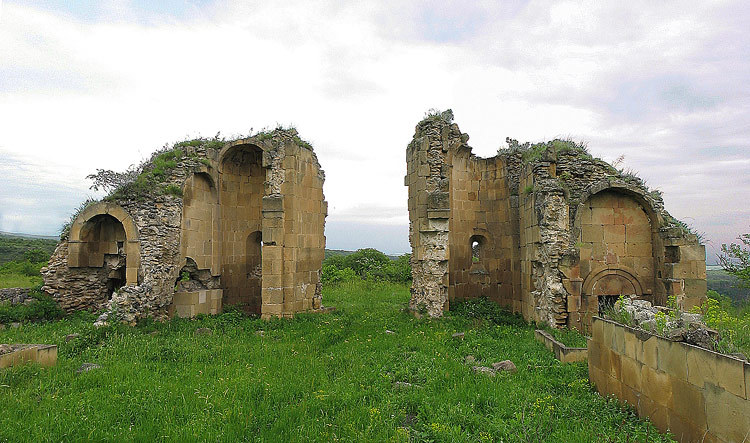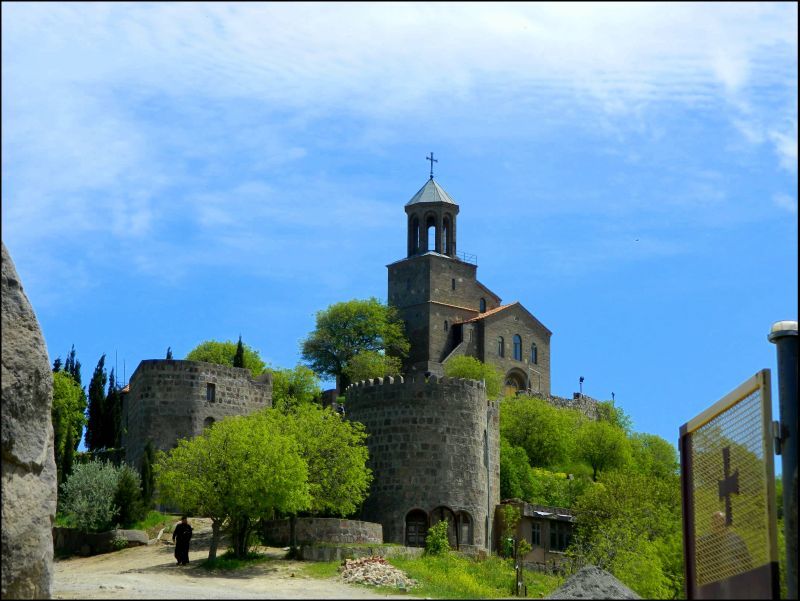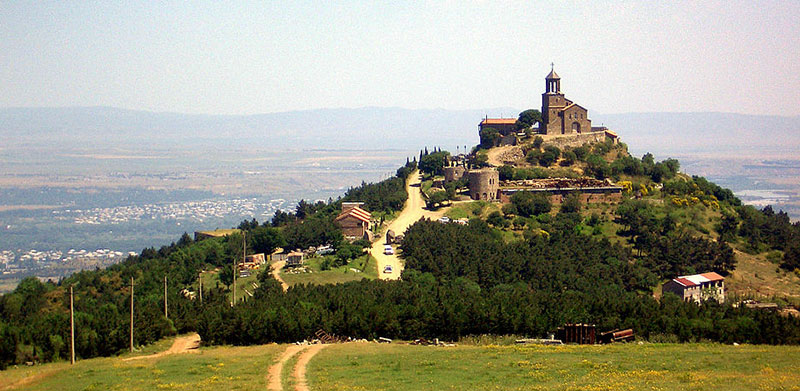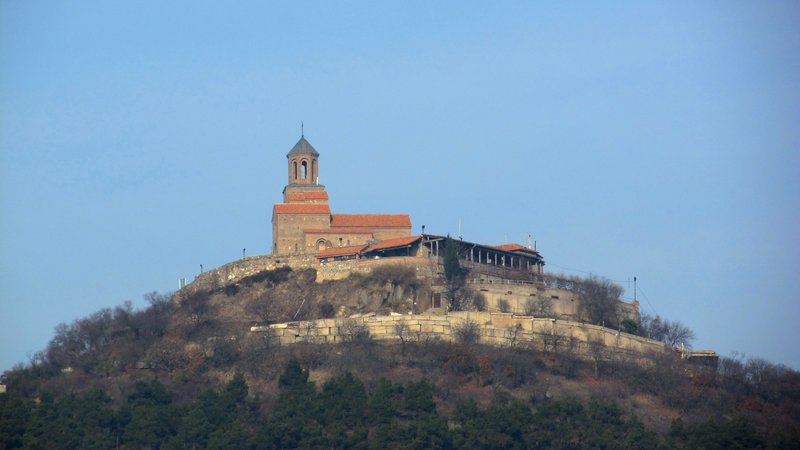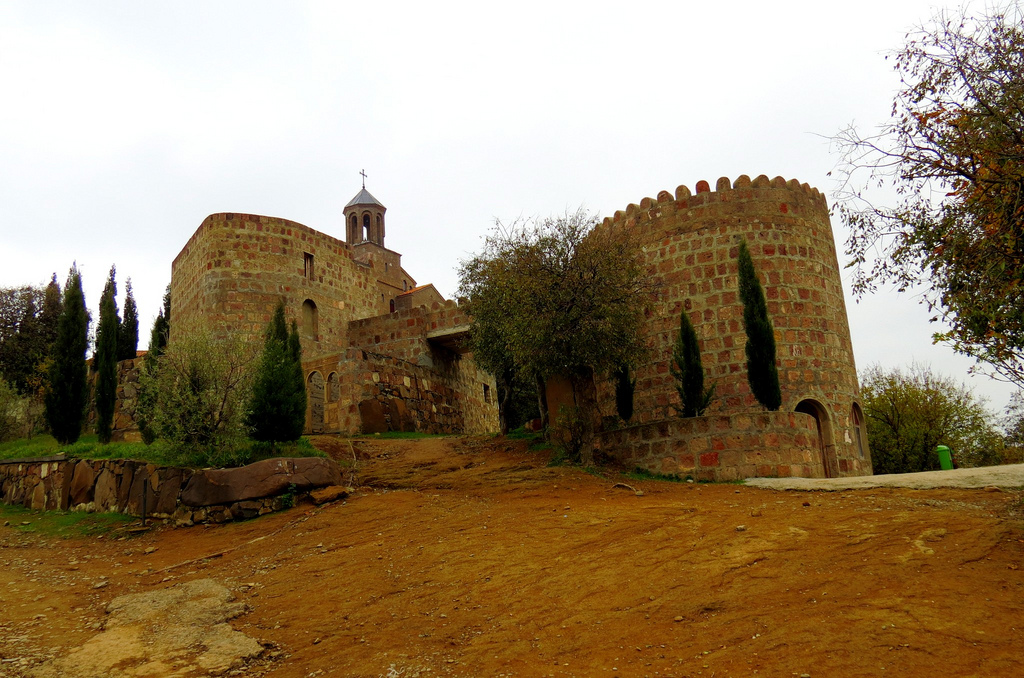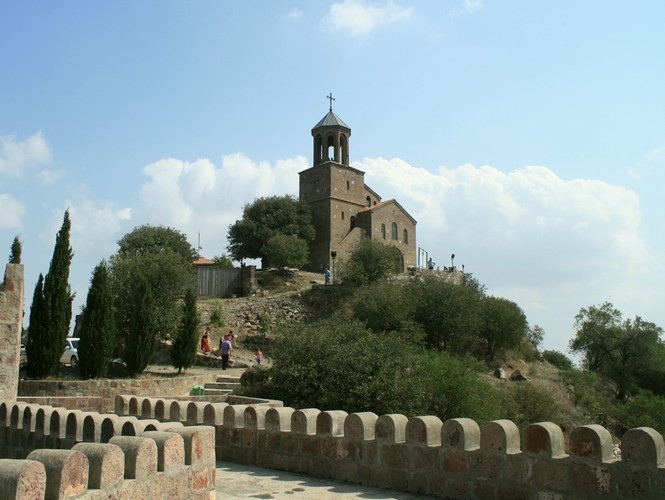ALGETI NATIONAL PARK
DETAILS
The Algeti National Park is a protected area in Georgia, in the southeast of the country. It lies in the region of Kvemo Kartli, within the Municipality of Tetritsqaro, some 60 km southwest of the nation’s capital, Tbilisi.
The Algeti National Park stretches along the upper Algeti valley at the woody southern slopes of the eastern Trialeti Range, with the highest point being Mount Kldekari at 2,000 m above sea level. The park was founded under the Soviet government in 1965 as a state reserve to protect the easternmost limits of the Caucasian Spruce and Nordmann Fir. In 2007, it was reorganized into a national park.
The Algeti National Park stretches along the upper Algeti valley at the woody southern slopes of the eastern Trialeti Range, with the highest point being Mount Kldekari at 2,000 m above sea level. The park was founded under the Soviet government in 1965 as a state reserve to protect the easternmost limits of the Caucasian Spruce and Nordmann Fir. In 2007, it was reorganized into a national park.
BIRTVISI FORTRESS
DETAILS
Birtvisi is a ruined medieval fortress in Kvemo Kartli, Georgia, nested within limestone cliffs in the Algeti river gorge. It is now within the boundaries of the Tetri-Tsqaro municipality, adjacent to the Algeti National Park, south-west of the nation’s capital Tbilisi.
Birtvisi is essentially a natural rocky fortress of 1 km², secured by walls and towers, the most prominent of which – known as Sheupovari (“Obstinate”) – tops the tallest rock in the area. Various accessory structures, an aqueduct included, have also survived.
In written sources, Birtvisi is first mentioned as a possession of the Arab amir of Tiflis of which he was divested by the Georgian nobles Liparit, Duke of Kldekari and Ivane Abazasdze in 1038. In medieval Georgia, Birtvisi entertained a reputation of an impregnable stronghold whose master could control the entire strategic Algeti gorge. The Turco-Mongol amir Timur notably reduced the fortress during one of his invasions of Georgia in 1403.[4] After the partition of the Kingdom of Georgia later in the 15th century, Birtvisi was within the borders of the Kingdom of Kartli and in possession of the princes Baratashvili.
Birtvisi is essentially a natural rocky fortress of 1 km², secured by walls and towers, the most prominent of which – known as Sheupovari (“Obstinate”) – tops the tallest rock in the area. Various accessory structures, an aqueduct included, have also survived.
In written sources, Birtvisi is first mentioned as a possession of the Arab amir of Tiflis of which he was divested by the Georgian nobles Liparit, Duke of Kldekari and Ivane Abazasdze in 1038. In medieval Georgia, Birtvisi entertained a reputation of an impregnable stronghold whose master could control the entire strategic Algeti gorge. The Turco-Mongol amir Timur notably reduced the fortress during one of his invasions of Georgia in 1403.[4] After the partition of the Kingdom of Georgia later in the 15th century, Birtvisi was within the borders of the Kingdom of Kartli and in possession of the princes Baratashvili.
BOLNISI SIONI CATHEDRAL
DETAILS
Bolnisi Sioni or Bolnisi Sioni Cathedral is a Georgian Orthodox basilica in the Bolnisi village of Bolnisi District, Georgia. The cathedral was built in 478–493. It is the oldest extant church building in Georgia.
Bolnisi Sioni Cathedral is known for its Georgian Bolnisi inscriptions. These are one of the oldest historical documents of the Georgian alphabet.
Bolnisi Sioni Cathedral is known for its Georgian Bolnisi inscriptions. These are one of the oldest historical documents of the Georgian alphabet.
DASHBASHI CANYONS
DETAILS
Dashbashi canyons is one of the most impressive natural monuments of Georgia. Dashbashi Canyon Natural Monument is a canyon carved by Ktsia (Khrami) River in the stream bed cut through the volcanogenic rocks of Dashbash volcanic plateau, distinguished by its rarity and biodiversity.
KLDEKARI FORTRESS
DETAILS
Kldekari was a duchy (saeristavo) in a mediaeval Georgia. Ruled by a powerful dynasty of Liparitids-Baghuashi, the duchy existed from 876 to 1103 in the south-western parts of modern Kvemo Kartli province, and, despite its small size, created particular problems to the Bagrationi kings who sought to bring all Georgian lands into a single state.
The duchy was established in 876 by Liparit I of the Baghuashi, who had been expelled by the Abkhazian kings from his fiefdom of Argveti in upper Imereti.[1] In their new fiefdom, the Liparitids accepted the suzerainty of David I Kuropalates, a Georgian Bagratid prince of Iberia based in Tao-Klarjeti, and built a stronghold called Kldekari on a strategic mountain of the Trialeti Range to control the roads cut through the cliff connecting the regions of Eastern Georgia with the southern neighboring countries and the Byzantine Empire. This area lay in the possessions of David’s kinsman Guaram Mampali, and the move eventually led to a split among the Bagratids which concluded with the murder of David by his nephew (son of Guaram Mampali) Nasra in 881. In a civil war that ensued, Liparit supported David’s heir, Adarnase I, who was victorious and crowned, with the Armenian support, as King of the Georgians in 888. Thus, Liparit and his heirs secured a hereditary dukedom of Trialeti and Kldekari. They quickly rose in prominence, gaining more possessions and prestige and when, in the early 11th century, the Bagratid dynasty established the unified all-Georgian monarchy, the Liparitids were among its most powerful vassals and rivals.
In the mid-eleventh century, the Liparitid house reached the apogee of their might and remained, for a century, leaders of the feudality in its struggle against the growing power of the kings of Georgia. In 1047, one of the most illustrious representatives of the family, Liparit IV, even succeeded in temporarily driving King Bagrat IV into the Byzantine territory. The kings of Georgia had to concede more possessions and titles to the family in order to pacify a series of the Liparitid rebellions. Liparit IV, became a regent for the young Georgian king Bagrat IV in the early 1030s. Subsequently, relations between the two men deteriorated and flared into an armed conflict. With the military support from the Byzantine Empire, Liparit defeated Bagrat at the Battle of Sasireti (1042) and became a virtual ruler of Georgia, but eventually he was forced out by his own subjects in 1059. His son and heir, John, was allowed by the Georgian crown to succeed Liparit IV as a duke. In 1074, John revolted against King George II of Georgia, and attempted to get Seljuk support. However, a Seljuk invasion force temporarily occupied the duchy and captured the ducal family.
David IV, a new and perhaps the most successful king of Georgia, forced the Baghuashi into submission in 1093, and checked their subsequent attempts to revolt. In 1103, he took advantage of the death of the last Kldekarian duke Rati III and abolished the duchy incorporating the area directly into a royal domain.
The duchy was established in 876 by Liparit I of the Baghuashi, who had been expelled by the Abkhazian kings from his fiefdom of Argveti in upper Imereti.[1] In their new fiefdom, the Liparitids accepted the suzerainty of David I Kuropalates, a Georgian Bagratid prince of Iberia based in Tao-Klarjeti, and built a stronghold called Kldekari on a strategic mountain of the Trialeti Range to control the roads cut through the cliff connecting the regions of Eastern Georgia with the southern neighboring countries and the Byzantine Empire. This area lay in the possessions of David’s kinsman Guaram Mampali, and the move eventually led to a split among the Bagratids which concluded with the murder of David by his nephew (son of Guaram Mampali) Nasra in 881. In a civil war that ensued, Liparit supported David’s heir, Adarnase I, who was victorious and crowned, with the Armenian support, as King of the Georgians in 888. Thus, Liparit and his heirs secured a hereditary dukedom of Trialeti and Kldekari. They quickly rose in prominence, gaining more possessions and prestige and when, in the early 11th century, the Bagratid dynasty established the unified all-Georgian monarchy, the Liparitids were among its most powerful vassals and rivals.
In the mid-eleventh century, the Liparitid house reached the apogee of their might and remained, for a century, leaders of the feudality in its struggle against the growing power of the kings of Georgia. In 1047, one of the most illustrious representatives of the family, Liparit IV, even succeeded in temporarily driving King Bagrat IV into the Byzantine territory. The kings of Georgia had to concede more possessions and titles to the family in order to pacify a series of the Liparitid rebellions. Liparit IV, became a regent for the young Georgian king Bagrat IV in the early 1030s. Subsequently, relations between the two men deteriorated and flared into an armed conflict. With the military support from the Byzantine Empire, Liparit defeated Bagrat at the Battle of Sasireti (1042) and became a virtual ruler of Georgia, but eventually he was forced out by his own subjects in 1059. His son and heir, John, was allowed by the Georgian crown to succeed Liparit IV as a duke. In 1074, John revolted against King George II of Georgia, and attempted to get Seljuk support. However, a Seljuk invasion force temporarily occupied the duchy and captured the ducal family.
David IV, a new and perhaps the most successful king of Georgia, forced the Baghuashi into submission in 1093, and checked their subsequent attempts to revolt. In 1103, he took advantage of the death of the last Kldekarian duke Rati III and abolished the duchy incorporating the area directly into a royal domain.
MARTKOPI MONASTERY
DETAILS
Martqopi (Martkopi, or Martqophi) is a village in Gardabani District of Georgia. It is located on the left side of Ialno range, in the gorges of the rivers Alikhevi and Tevali, and is at an altitude of 770 meters. It is 55 kilometres from Gardabani and 12 kilometres from Vaziani (the nearest railway station).
The region of Martqopi played a big role during the third millennium BC. It is distinguished by many rich burial kurgans, representing the early stage of the Early Kurgan culture of Central Transcaucasia.
Martkopi territory was inhabited from 1st to the 2nd century. Till the 6th century its name was Akriani. It is considered that name “Martkopi” comes from one of the Thirteen Assyrian Fathers – Anton Martqopeli (martomkopeli in Georgian means someone who is living alone). A bench cathedral was established in the 13th century, which since the 15th century became a centre of Sadrosho (administrative unit in feudal Georgia mainly used for army mobilizing). In 1625 in Martkopi a military confrontation took place between Georgia and Iran.
In addition Martkopi served as a cultural centre too. The names of the famous Georgian poets and writers Nikolos Cherkesishvili (17th-18th century), Ioan Khobulashvili (18th century), Stefane Djorjadze (18th century) and others are associated with the village.
Precious Parthian coins (100 BC-200 AD) were found in the territory of the village.
In Martkopi ruins of cupola church is still preserved. It was built in 1810 by bishop of Rustavi Stefane II. Some other family castles from the 18th century can also be found here. Near the village is Ghvtaeba monastery complex dating back to 5th—6th centuries.
The region of Martqopi played a big role during the third millennium BC. It is distinguished by many rich burial kurgans, representing the early stage of the Early Kurgan culture of Central Transcaucasia.
Martkopi territory was inhabited from 1st to the 2nd century. Till the 6th century its name was Akriani. It is considered that name “Martkopi” comes from one of the Thirteen Assyrian Fathers – Anton Martqopeli (martomkopeli in Georgian means someone who is living alone). A bench cathedral was established in the 13th century, which since the 15th century became a centre of Sadrosho (administrative unit in feudal Georgia mainly used for army mobilizing). In 1625 in Martkopi a military confrontation took place between Georgia and Iran.
In addition Martkopi served as a cultural centre too. The names of the famous Georgian poets and writers Nikolos Cherkesishvili (17th-18th century), Ioan Khobulashvili (18th century), Stefane Djorjadze (18th century) and others are associated with the village.
Precious Parthian coins (100 BC-200 AD) were found in the territory of the village.
In Martkopi ruins of cupola church is still preserved. It was built in 1810 by bishop of Rustavi Stefane II. Some other family castles from the 18th century can also be found here. Near the village is Ghvtaeba monastery complex dating back to 5th—6th centuries.
SAMSHVILDE
DETAILS
Samshvilde is a ruined fortified city and archaeological site in Georgia, in the country’s south, near the homonymous modern-day village in the Tetritsqaro Municipality, Kvemo Kartli region. The ruins of the city, mostly medieval structures, stretch for a distance of 2.5 km in length and 400 metres (1,300 ft) in width in the Khrami river valley. Some of the most recognizable monuments are the Samshvilde Sioni Church and a citadel erected on a rocky river promontory.
Samshvilde features in the medieval Georgian annals as one of the oldest cities of ancient Kartli, dating back to the 3rd century BC. In the Middle Ages, it was an important stronghold as well as a lively commercial and industrial city. Samshvilde changed hands several times. At the end of the 10th century, it became capital of the Armenian kings of Tashir-Dzoraget and was incorporated in the Kingdom of Georgia in 1064. From the mid-13th century on, as fortunes of the medieval Georgian monarchy faded, Samshvilde went into decline and was reduced to a peripheral military outpost. By the end of the 18th century, it was in ruins.
Samshvilde features in the medieval Georgian annals as one of the oldest cities of ancient Kartli, dating back to the 3rd century BC. In the Middle Ages, it was an important stronghold as well as a lively commercial and industrial city. Samshvilde changed hands several times. At the end of the 10th century, it became capital of the Armenian kings of Tashir-Dzoraget and was incorporated in the Kingdom of Georgia in 1064. From the mid-13th century on, as fortunes of the medieval Georgian monarchy faded, Samshvilde went into decline and was reduced to a peripheral military outpost. By the end of the 18th century, it was in ruins.
SHAVNABADA MONASTERY
DETAILS
Shavnabada Monastery is a medieval Georgian Orthodox monastic complex that is located upon Shavnabada Mountain, approximately 8 km away from the village of Tabatskuri and 20 km southeast of Bakuriani, in the Samtskhe-Javakheti Province (Mkhare), of Georgia.
It was named in honor of St. George who, according to a local legend, wore a black cloak (Georgian: shavi nabadi, hence the mountain’s name) while leading the army of the king of Georgia in one of the victorious battles of the time. The monastery of Shavnabada is known for a rare variety of wine, also called Shavnabada, made by the monks there.
It was named in honor of St. George who, according to a local legend, wore a black cloak (Georgian: shavi nabadi, hence the mountain’s name) while leading the army of the king of Georgia in one of the victorious battles of the time. The monastery of Shavnabada is known for a rare variety of wine, also called Shavnabada, made by the monks there.

